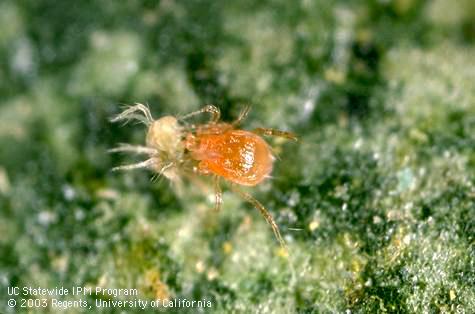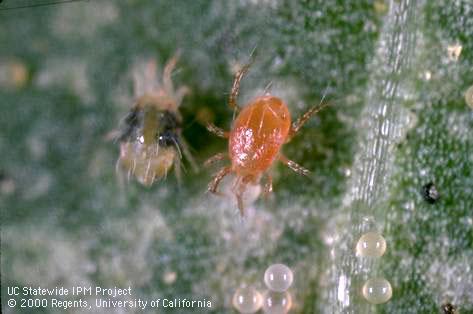



Like other mites, Phytoseiulus spp. do not have antennae, segmented bodies, or wings. They pass through an egg stage, a six-legged larval stage and 2 eight-legged immature nymphal stages before becoming adults.
Phytoseiulus spp. mites are about the size of twospotted spider mites, but lack spots, are orange in color, and are shinier and more pear-shaped than their prey. The shiny, oval eggs of Phytoseiulus persimilis are larger than spider mite eggs. In addition, predatory mites are much more active than pest mites, only stopping to feed. Under magnification the mouthparts of predatory mites can be seen extending in front of their body while pest mite mouthparts extend downward to feed on plants.
This predatory mite feeds exclusively on spider mites and consumes 2 or 3 adult females or several dozen egg in a day. Phytoseiulus persimilis often needs to be reintroduced as it relies exclusively on mites for food and can eventually consume all available prey. This beneficial mite is commercially available and is commonly released against Tetranychus spp. spider mites such as the Pacific spider mite and the twospotted spider mite. P. persimilis tolerates hot climates as long as the relative humidity is between 60 and 90 percent.